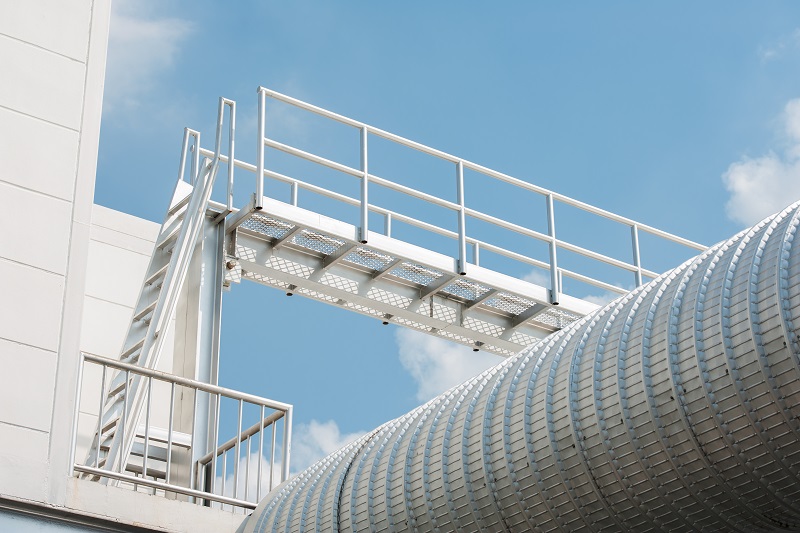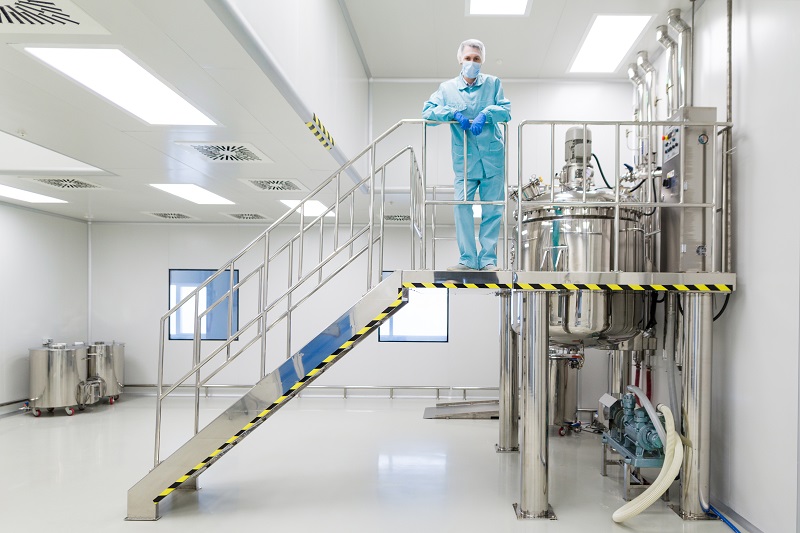
Plant Platforms and walkways allow access to high heavy equipment and machinery. This helps prevent rooftops from getting damaged either by the weight of the workers or equipment and provides safe access for maintenance and examination of equipment and machinery. Stationary platforms can house machinery or equipment along with handrail walkways to provide access to the workers.
Personnel working in these elevated workspaces are always susceptible to accidents. Therefore, it is essential to ensure the stability of these platforms by constructing them as per industrial standards. Barriers such as toe boards and guard rails will prevent people from falling off the edge of roofs or platforms. Free-standing plant platforms are also available that allow mobility and can be transported from one place to another.
Types of plant walkways
Platforms and walkways require human access for maintenance, reconfiguration, and inspection. These are permanent substitutes for bucket lifts, scissor lifts, or scaffolding. Additionally, you can remove or reconfigure free-standing platforms. From seaports to factories, plant platforms and walkways operate in outdoor and indoor environments. These serve as a work site, and their design must accommodate safety, functionality, and versatility. Several types of industrial walkways with extensive applications are available. A few examples are:
- Arena catwalks
- Oil storage tanks and Product berths
- Maintenance walkways
- Accessways on unreinforced or sloped rooftops
Advantages of Accessibility Plant platforms
Portable platforms offer safe, secure access to elevated locations. According to industrial standards, every portable platform comprises enclosures and handrails so that workers can focus on their work instead of being concerned about falling off. Additionally, these platforms are made of sturdy materials that ensure durability and enhanced safety. They enable safe, rapid movement from one high site to another without reconfiguration. Motorized or machine-operated access platforms are industrial. Their movement makes them a platform and walkway.
Types of Accessibility Plant Platforms
There are many access platforms, although selecting a befitting one could be tricky. Below you will find the popular categories narrowed down along with their applications.
- Semi-stationary platform – It is a commonly used platform made by welding steel poles providing a toughened structure to work at elevated spots. As it is used at considerable heights, its design comprises enclosures and guard rails. Its robust structure enables personnel to work at elevated spots for many hours. Although they allow mobility, it is not easy to move them, another feature that ensures the safety of workers.
- Foldable or Snappy tower – The elevation provided by foldable platforms is equal to that of a step ladder. These comprise a large and stable area for off-site repair jobs, finishing work, carpenters, and painters. Also, there is a low-elevation model without enclosures or guard rails. Despite their sturdy build quality, the foldable feature makes these access platforms convenient to transport from one location to another.
- Powered platform – This platform operates through motors and electricity. The platform is attached to a hydraulic lift that elevates it from the ground level. The control system is present within the platform enclosure to determine the required height. Scissor lifts, cherry pickers, and electric hoists are examples of powered platforms. Scissor lifts are appropriate for maintaining or repairing heavy machinery that does not allow ground-level access. Cherry pickers and electric hoists allow transit into unusual and tight spaces with enhanced mobility.
- Stationary platform – This plant platform is designed to allow movement within a limited space. This tower-like structure is integrated with lockable casters. Stationary platforms help fulfil functions such as providing access to equipment installed at hard-to-reach locations.

Points to consider while installing plant platforms and walkways
To ensure the installation of sturdy and safe platforms, consider the following:
- The surface should not be slippery – This is important to ensure safety in cold and wet climatic conditions.
- Secure walking route – While installing walkways around the workspace, outlining a safe path is essential to prevent mishaps.
- Reduce risks on rooftops – Stationary platforms should be installed in a way that does not damage the roof surface with the pressure of heavy machinery.
Conclusion
Accessibility platforms should fulfill governing safety parameters and enhance personnel’s ability to add value at a work site. Experts can help you find a suitable access platform within your budget without compromising quality. They will also help you ensure the platform aligns with the safety standards.

.jpg)




.jpg)